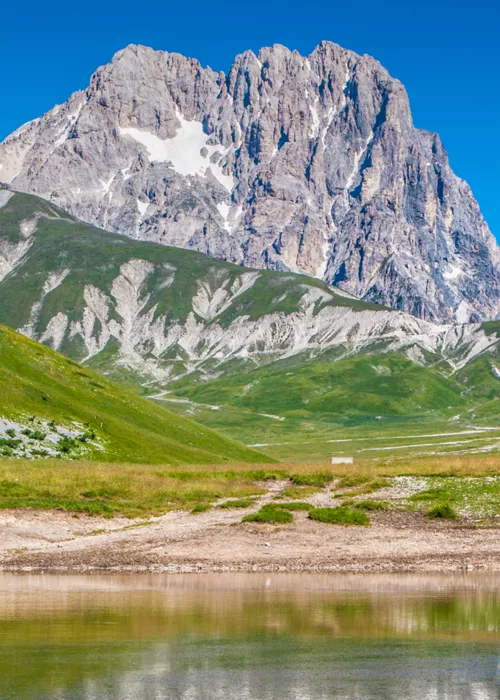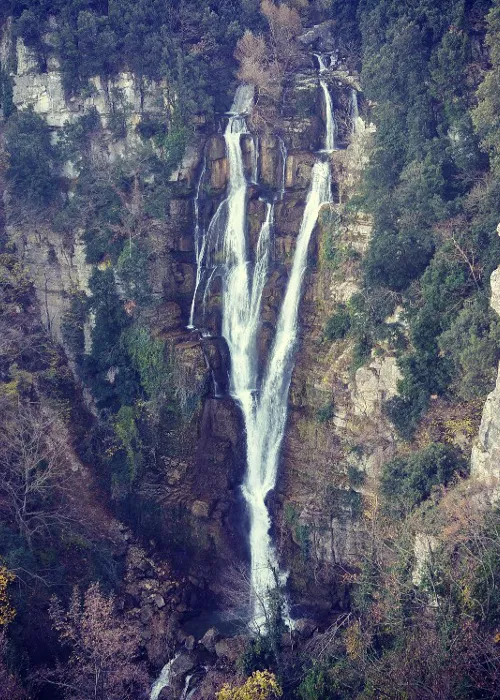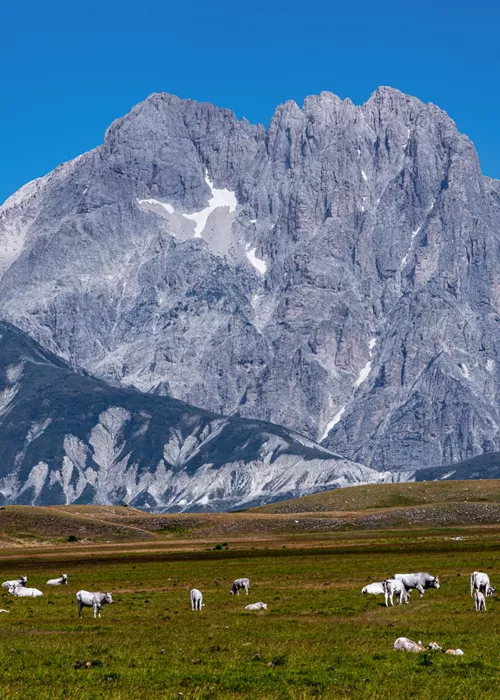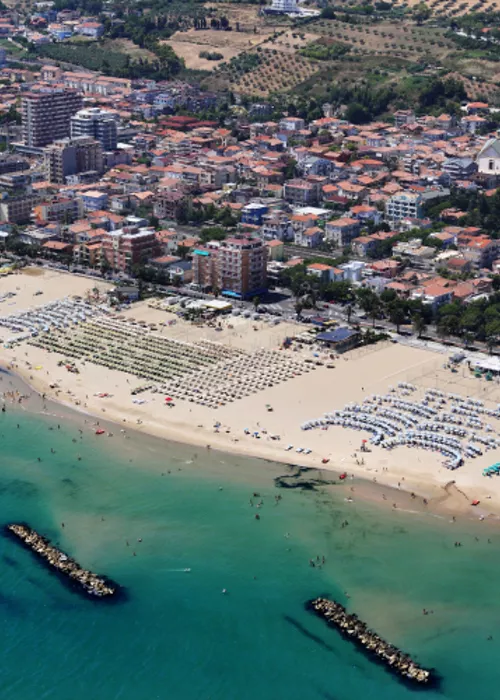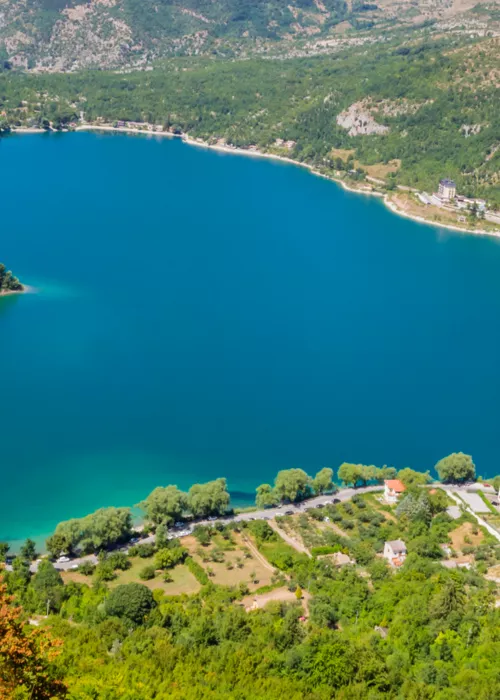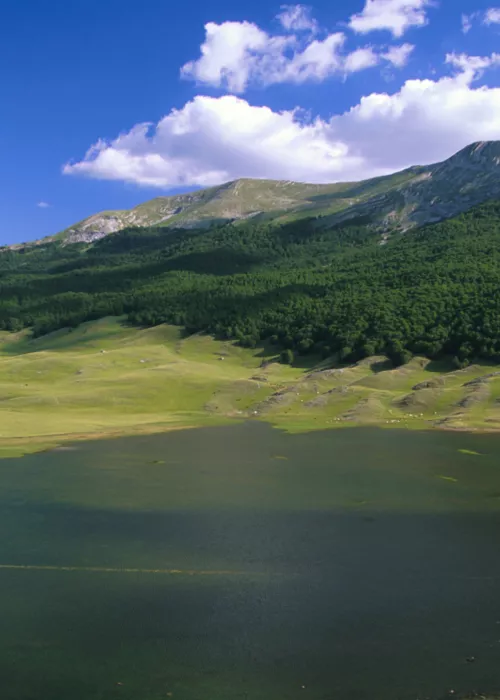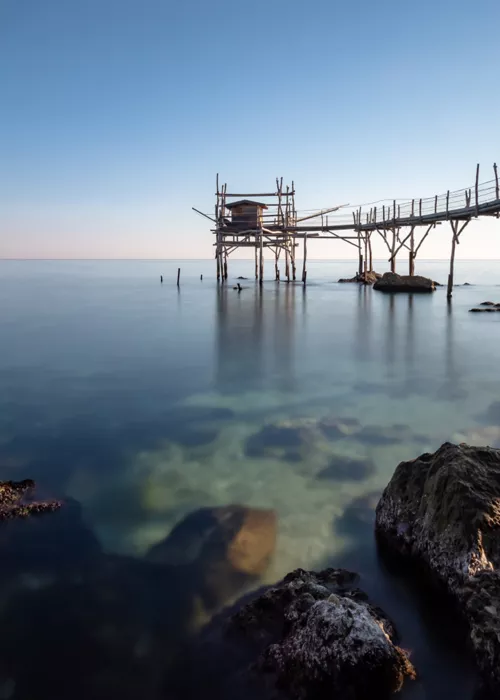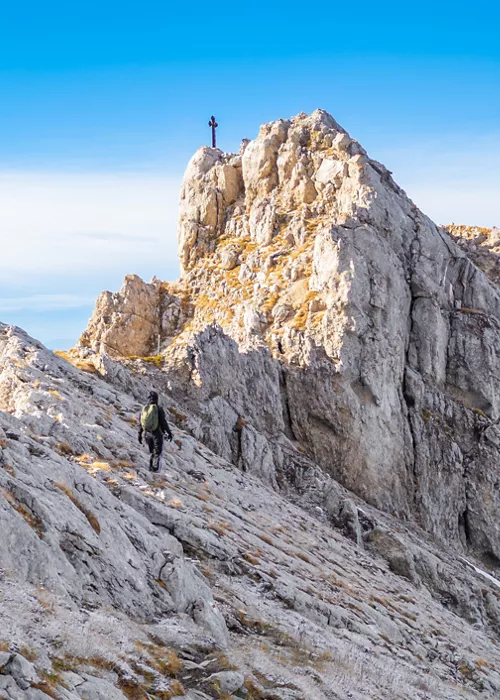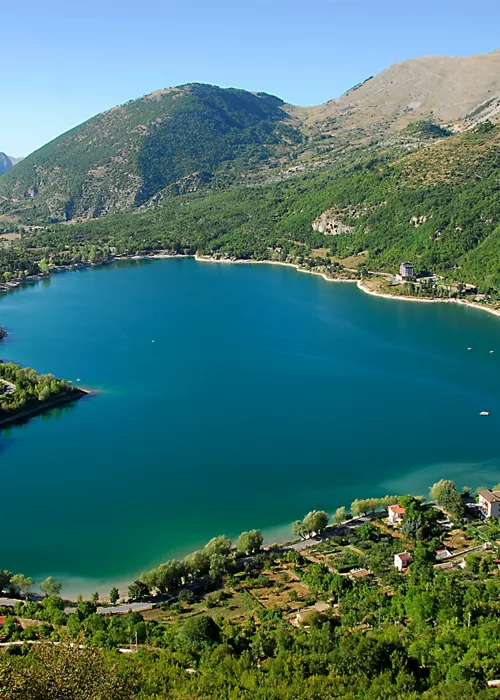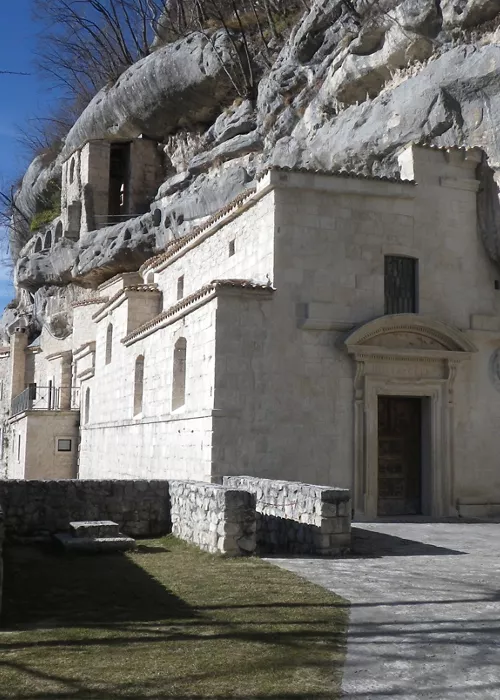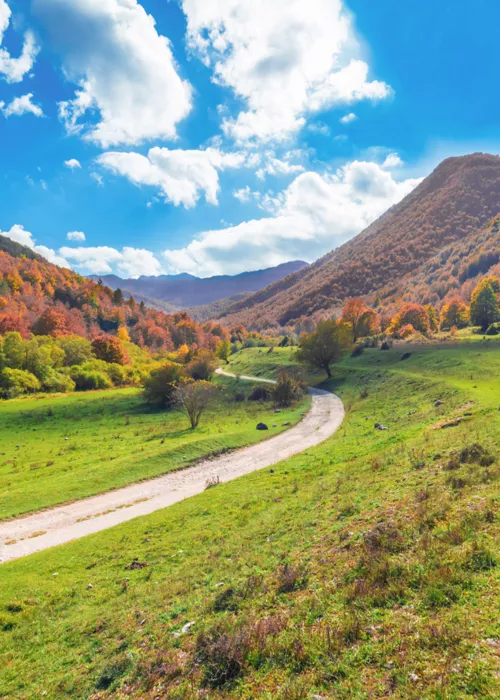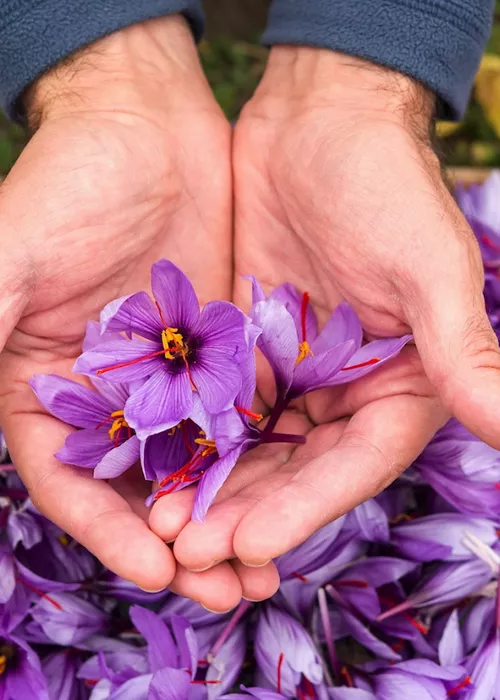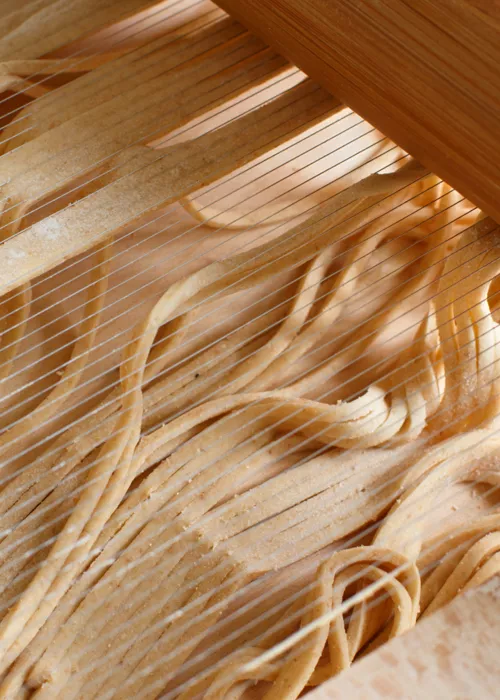Abruzzo, la regione verde d'Europa
4 minuti

Affacciato sul Mare Adriatico, con alle spalle il Gran Sasso, la Majella e il monte Velino, l’Abruzzo gode di una biodiversità unica associata a un territorio ricco di storia, di identità e di risorse enogastronomiche.
Territorio e risorse
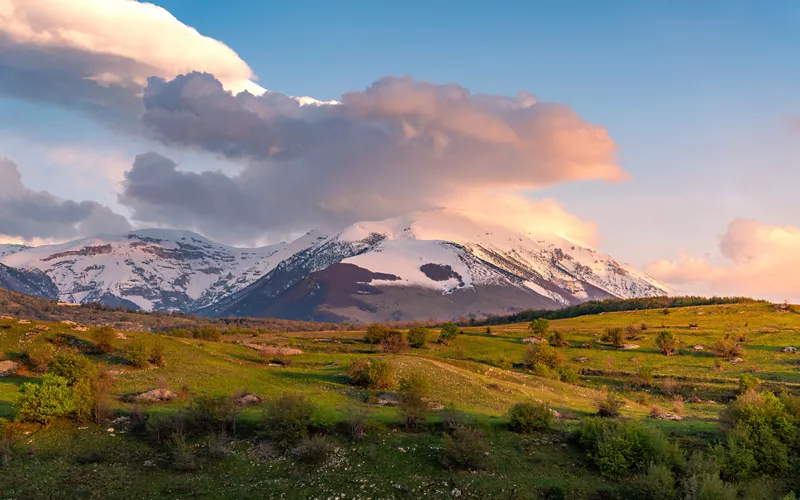
Un terzo del territorio abruzzese è vincolato da aree protette: tre Parchi Nazionali, un Parco Regionale e oltre trenta Riserve Naturali, da cui l'appellativo di Regione verde d'Europa. Una scelta forte, lungimirante, per chi ha fatto dell’ambiente la propria prima risorsa e proietta la regione in un ruolo di leader assoluto nel campo del “turismo verde”.
Nell’ambito delle regioni appenniniche, l’Abruzzo si caratterizza per la natura prevalentemente montuosa del suo territorio, con due terzi della superficie regionale posti al di sopra dei 750 metri di quota. Una caratteristica dovuta al particolare sviluppo che l’Appennino assume nel suo tratto centrale, nel quale – oltre a conservare il suo andamento mediano rispetto alla penisola – si espande trasversalmente dando origine a un complesso sistema di corrugamenti montuosi paralleli, inframmezzati da vasti altipiani.
Questo forte nodo montano, posto interamente in Abruzzo, vanta le maggiori vette dell’Appennino, con il Corno Grande del Gran Sasso (2912 m s.l.m.), il Monte Amaro della Majella (2794 m s.l.m.) e il Monte Velino (2486 m s.l.m.).
Altrettanto caratteristico è il versante costiero, con chilometri di spiagge e un tratto diventato ormai iconico: la Costa dei Trabocchi e la Via Verde, pista ciclabile a ridosso del mare, da dove è partita la prima tappa della scorsa edizione del Giro d'Italia.
La Costa dei Trabocchi
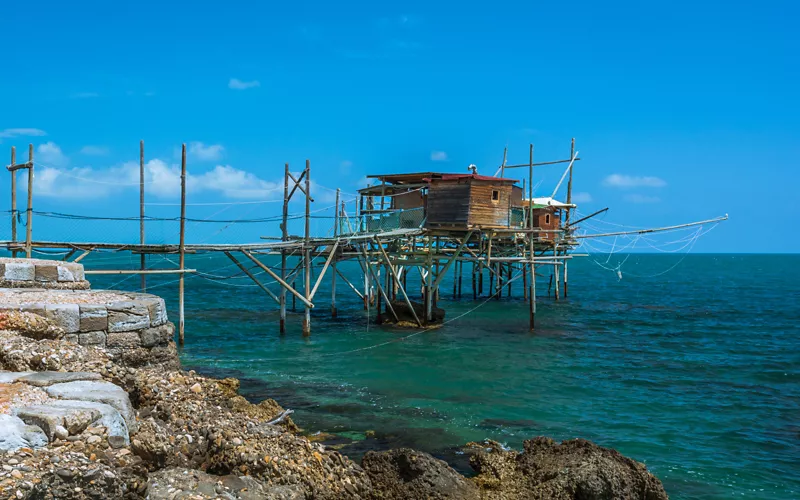
I Trabocchi sono antiche macchine da pesca tipiche delle coste abruzzesi (con versioni diverse in Molise e Puglia). Queste imponenti strutture in legno, costruite principalmente con pino d’Aleppo, si protendono dalla spiaggia verso il mare. Si pensa che la tecnica di pesca utilizzata dai pescatori locali possa risalire addirittura all’epoca dei fenici. Uno dei primi documenti che attesta la presenza dei trabocchi in zona risale al XV secolo. Il documento racconta la vita di Fra Pietro da Morrone, che successivamente divenne Papa Celestino V.
La Costa dei Trabocchi è, quindi, lo stupendo tratto di litorale abruzzese che ospita magnifici trabocchi. I tratti in cui ammirarli, e nuotare, sono principalmente Ortona, San Vito Chietino e Rocca San Giovanni.
Paesaggi ed esperienze suggestive che trovano un'amplificazione se abbinati alle risorse enogastronomiche.
Il giro d'Abruzzo nel bicchiere. Le denominazioni autoctone
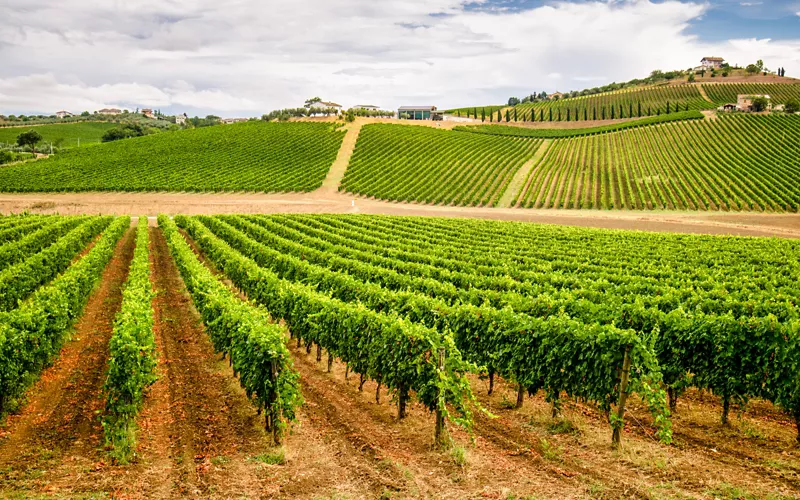
La qualità della produzione vinicola abruzzese si è innalzata in modo evidente negli ultimi 20 anni. Le varietà autoctone conquistano sempre più consenso nel panorama internazionale. Molto diffuso è il Trebbiano d’Abruzzo DOC, ottenuto dall’omonimo vitigno, conosciuto per la sua capacità d’invecchiamento; esprime aromi fruttati e floreali, accompagnati da note minerali. Il Pecorino, molto apprezzato in purezza, è sapido, fresco e dotato di carattere. Anche in versione spumantizzata è molto richiesto. Interessante la Cococciola, che sta iniziando a riscuotere interessanti risultati; una varietà vinificata sia nella versione ferma che spumantizzata.
Doveroso citare il Cerasuolo d’Abruzzo, un rosato ottenuto da uve Montepulciano. Lo possiamo sicuramente definire fra i migliori rosati italiani sia per la grande piacevolezza di gusto che per l’ottimo compromesso fra struttura e freschezza, perfetto a tutto pasto e dalla grande versatilità di abbinamento. Il Cerasuolo d’Abruzzo è un rosato fra i più longevi del panorama viticolo italiano.
Il vino simbolo è il Montepulciano d’Abruzzo DOC. Tante le interpretazioni, molto identitaria è la DOCG Montepulciano d’Abruzzo Colline Teramane, espressione della parte nord, al confine con le Marche.
Il Montepulciano d’Abruzzo è un vino di corpo e nel contempo elegante, pieno, equilibrato e adatto all’invecchiamento.
La ricetta creativa: consistenze di pasta e dell’orto
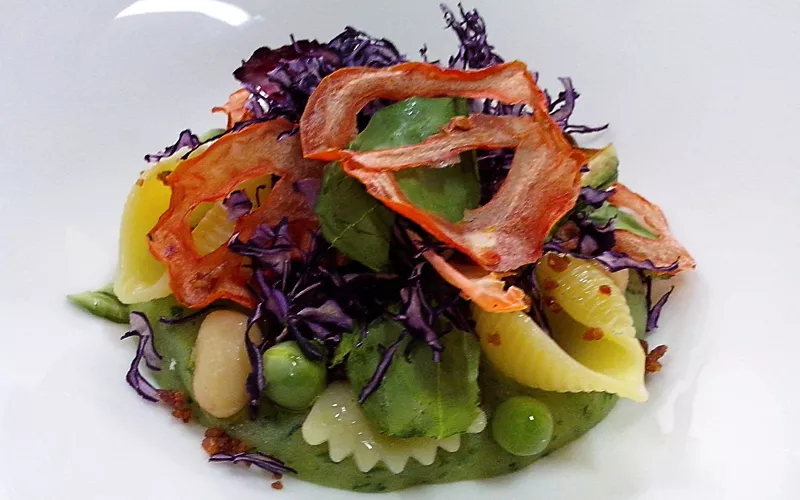
Ricetta della chef abruzzese Nadia Moscardi. Rivisitazione creativa di un celebre piatto della tradizione a base di legumi, ortaggi e pasta; un piatto attualmente definito di recupero e in linea con il concetto di economia circolare: le Virtù Teramane.
<<I piatti sono sempre legati al territorio, ai prodotti aquilani e alla tradizione, ma interpretati in chiave moderna con nuove tecniche di cottura e con preparazioni al passo con i tempi. Piatti della memoria che arrivano al cuore con i loro profumi e sapori modernamente interpretati, ma sempre sorretti dall’autenticità delle materie prime.>>
Nadia Moscardi
Difficoltà: Media
Dosi: 4 persone
Ingredienti
50 gr di fagioli bianchi di Paganica, 20 gr di ceci di Navelli, 20 gr lenticchie di S.Stefano, 400 gr di zucchine, 50 gr di prosciutto a fette, 20 gr spinacini novelli, 20 gr di farfalle, 20 gr di penne, 20 gr di conchiglie rigate, 20 gr mezzi rigatoni. Cipolla bianca, Olio extra vergine di oliva e di semi di arachide
Procedimento
Mettere a bagno i legumi per una notte e poi lessarli. Mettere il prosciutto in forno a 100° per 25/30 minuti, far raffreddare e poi frullare. Lessare le patate, saltarle in padella con dell’olio, la cipolla e gli spinacini crudi, sistemare di sale e poi frullare il tutto. Cuocere la pasta, prima i mezzi rigatoni e le conchiglie e dopo 2 minuti la restante pasta fino a una giusta cottura. Friggere la zucchina tagliata a fette sottili in olio ben caldo. Impiattare la crema di patate con sopra la pasta, un filo di olio extravergine di oliva, i legumi, le verdure, la zucchina fritta e la crema di prosciutto.
L’abbinamento: Cerasuolo d'Abruzzo Doc
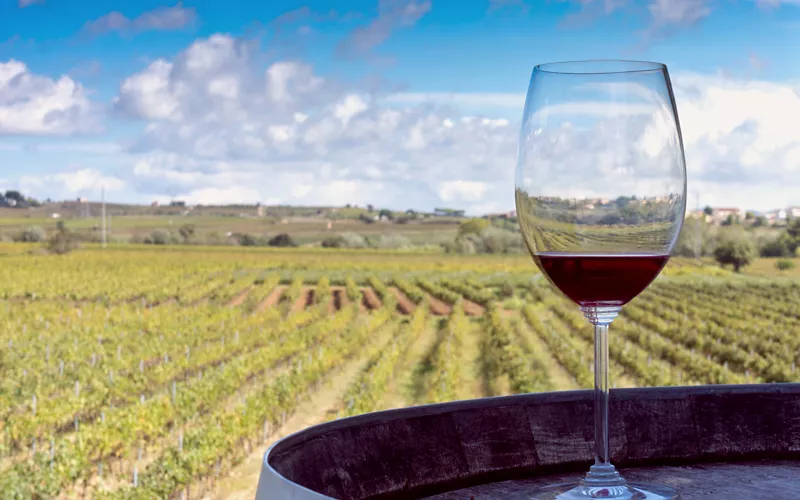
A questo piatto della tradizione abruzzese, ricco di ingredienti e con una componente anche in frittura, ben si abbina il Cerasuolo d’Abruzzo. Un rosato ottenuto dal vitigno Montepulciano d’Abruzzo in purezza. Regala sentori fruttati di ciliegia, fragola e melograno, con un lieve accenno di foglia di pomodoro. Dotato di ottima struttura, ha un carattere avvolgente, fruttato e lievemente sapido.


